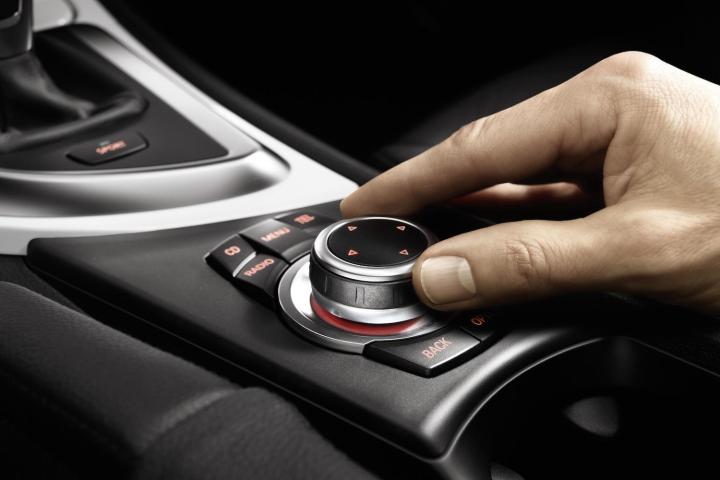
According to Autocar, NHTSA said, “We seek [public] comment on whether the selection of some controller/multi-task display combinations are, or could become, too complex for some drivers.”
Presently, U.S. law requires in-car displays and controls to be side-by-side, which is supposed to make the systems easier and safer to use. The BMW iDrive system skirts that regulation by having a joystick-based system located beneath the screen near the shifter. Lexus and Mercedes use similar setups in some of their cars.
Both Porsche and Mazda have asked regulators for clarification on the rules governing combination multi-function switch/rotary dial systems.
I, for one, think such a ban would hugely hinder the growth of automotive tech, as it would effectively keep automakers from bringing the latest and greatest in-dash tech systems to the U.S.
In the case of iDrive and many other systems, operating the tech using a mouse-like rotary controller using the right hand in a relaxed position atop the center tunnel is actually much more intuitive (it can be done without looking down) for anyone who has ever used a computer. At least it’s a lot more natural than poking at myriad buttons in the middle of the dash while driving.
The innovative Audi Matrix Beam LED headlight system is a another perfect example of old regulations holding back worthy technological advances. The Audi system is safer than conventional headlights but isn’t allowed stateside due to current statutes designed to regulate incandescent headlights and other older technologies. Hopefully, that will change.
Instead of holding back on cutting-edge infotainment tech, we should rather incentivize automakers to include more safety tech alongside their advanced infotainment. How cars work is rapidly changing. We shouldn’t hinder, but rather inspire.
Legislators should be looking at mandating more vehicle autonomy, which will exponentially improve roadway safety. A freeway full of autonomous vehicles will be far safer than cars operated solely by people without the distraction of any complex infotainment. We’ve been there. We don’t need to scale back tech for safety, we need to instead ramp it up.
I love driving but I reckon most Americans would much rather own a car loaded with tech goodies that can drive itself than one that they are in full control over but is bereft of high-tech gadgets.
Legislators: do the right thing. Don’t ban the iDrive. Instead, focus on requiring partial or full vehicle autonomy features. We’ll be far safer that way.
What do you think? Are in-dash tech centers becoming too distracting, or can better driver control systems return focus to the road? Leave a comment.
Editors' Recommendations
- VinFast is bringing a mini electric SUV to the U.S., and maybe a pickup, too
- Mercedes is finally bringing an electric van to the U.S.
- Jeep is launching its first two electric SUVs in the U.S. in 2024
- Tesla recalls 130,000 U.S. vehicles over touchscreen safety issue
- Toyota announces site for its first U.S. battery plant


